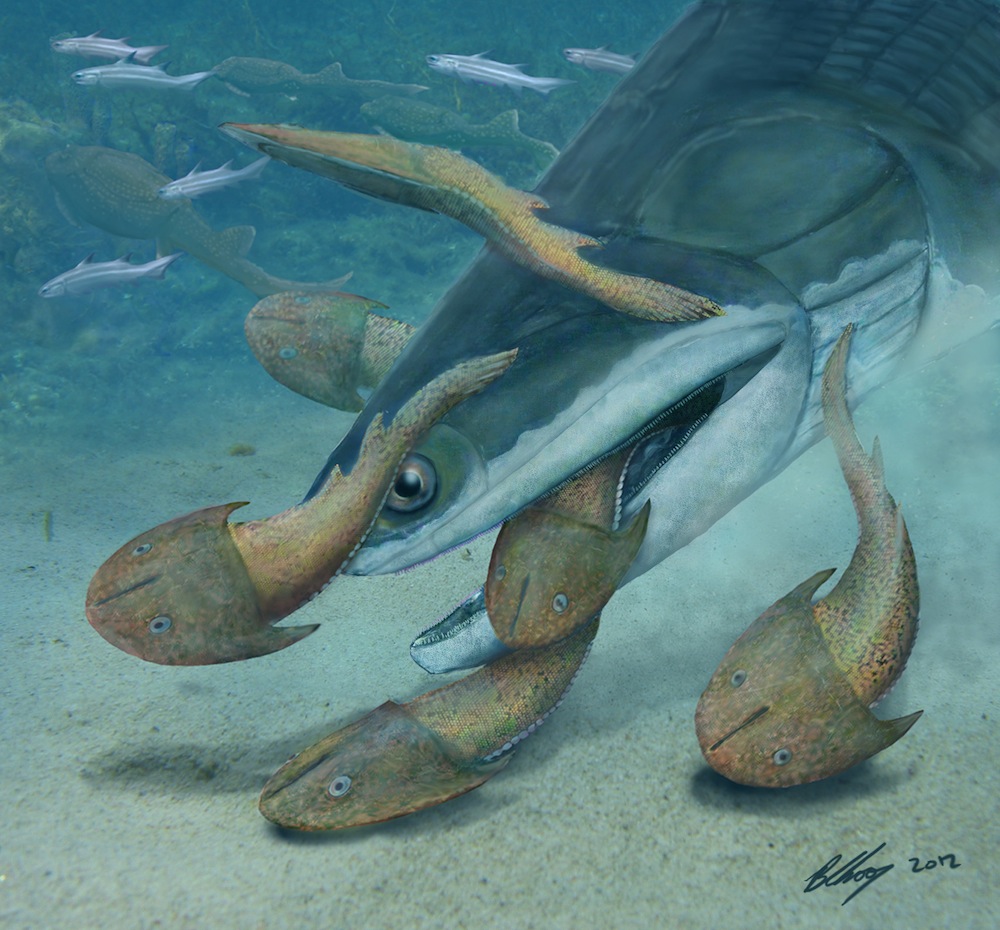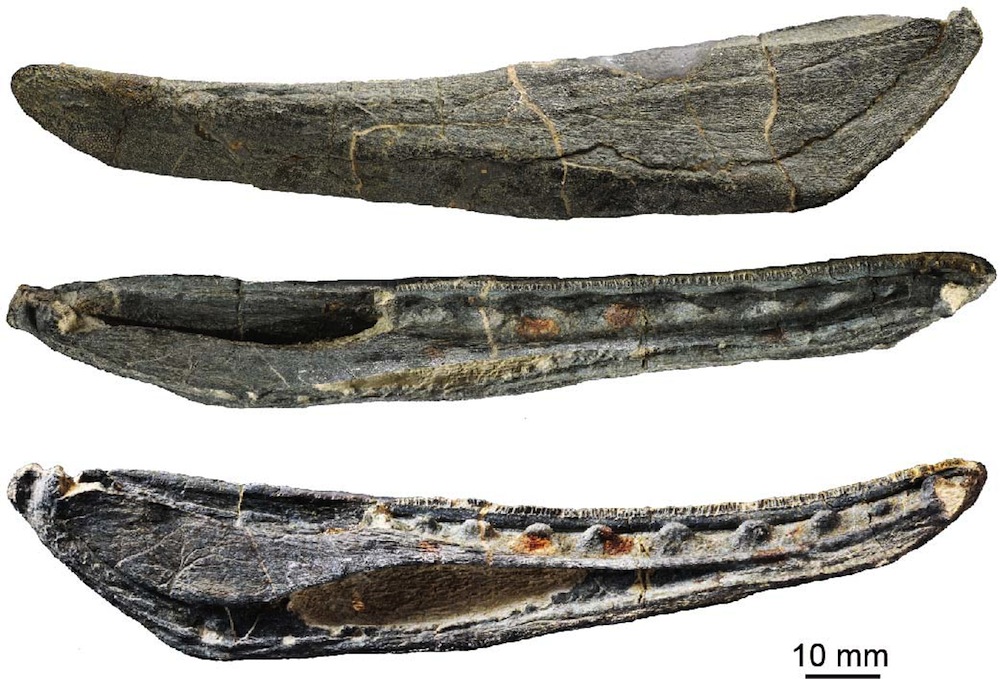
Scientists have unearthed a fossilized fish that was once the biggest vertebrate of its day.
The predatory sea creature, dubbed Megamastax amblyodus, which means "big mouth, blunt teeth," prowled the oceans about 423 million years ago and used its flat teeth for crushing the shells of its slow-moving, hard-shelled prey.
Age of fishes
The new species ruled the seas during a period known as the Devonian, or the Age of Fish, which occurred between 416 million and 358 million years ago. The Devonian period saw the rise of some of Earth's largest vertebrate predators, including the terrifying Dunkleosteus, a massive predatory fish that could grow to be 33 feet (10 meters) long. [T. rex of the Seas: A Mosasaur Gallery]
But most of the fossil vertebrates unearthed from the early Devonian, or what's known as the Silurian period, were relatively small, with the largest uncovered fossil being just 14 inches (35 centimeters) long.
Some climate models have suggested that the period was characterized by low atmospheric oxygen levels, or hypoxia. Existing "marine fishes in general are also known to be less tolerant of hypoxic conditions than many marine invertebrates," the researchers wrote in the study. "This suggests that low oxygen levels would have imposed some degree of extrinsic constraint on the maximum body size and available niche opportunities of the earliest gnathostomes," or jawed vertebrates.
Big fish
Sign up for the Live Science daily newsletter now
Get the world’s most fascinating discoveries delivered straight to your inbox.
Vertebrate paleontologist Brian Choo and his colleagues at the Chinese Academy of Sciences unearthed jaw and tooth fragments from the fossilized fish in the Kuanti formation in China.

The jaw was at least 6.7 inches (17 cm) long and contained both sharp conical teeth and blunt teeth. The blunt choppers would have been perfect for crushing hard shells, while the sharp teeth would have been better for grasping unsuspecting prey. The predatory sea creature may have used its teeth to prey upon the slow-moving, armored fish that lived at the time, such as the extinct Dunyu longiforus, the researchers said.
Based on the jaw size, the paleontologists estimate that M. amblyodus could have been up to 39 inches (1 meter) long — about three times the size of the next-biggest creature from the period.
Early origins
The new discovery suggests that large vertebrate predators may have emerged earlier in the Devonian period than previously thought.
At the same time, a newer climate model suggests the Silurian period may not have been as oxygen-starved as previous models have shown.
The newly discovered fish, together with fossil finds that show greater diversity in vertebrates at the time, call into question the notion that low oxygen levels during the Silurian limited the body size of early jawed vertebrates.
"While not in itself a reliable indicator of ancient atmospheric conditions, these fossils are at least consistent with the high Silurian oxygen levels predicted" by a newer climate model, the authors wrote in the paper.
Megamastax amblyodus was described today (June 12) in the journal Scientific Reports.
Follow Tia Ghose on Twitterand Google+. Follow Live Science @livescience, Facebook & Google+. Original article on Live Science.

Tia is the managing editor and was previously a senior writer for Live Science. Her work has appeared in Scientific American, Wired.com and other outlets. She holds a master's degree in bioengineering from the University of Washington, a graduate certificate in science writing from UC Santa Cruz and a bachelor's degree in mechanical engineering from the University of Texas at Austin. Tia was part of a team at the Milwaukee Journal Sentinel that published the Empty Cradles series on preterm births, which won multiple awards, including the 2012 Casey Medal for Meritorious Journalism.









